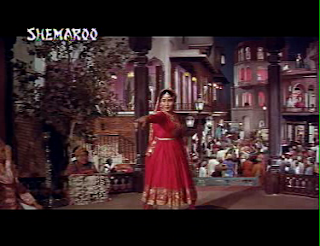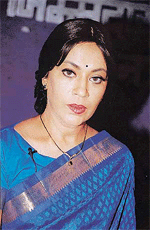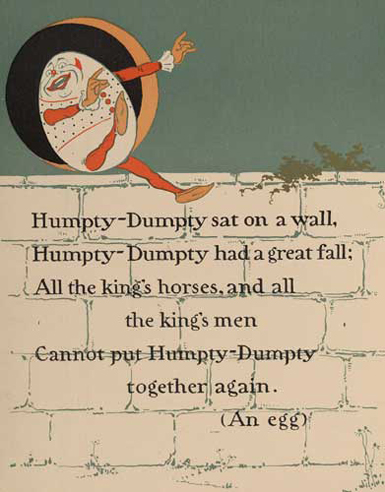Tuesday, July 8, 2008
KAMAL AMROHI'S PAKEEZAH ,KHALISTAN AND DOVE ON THE DOME OF BETHLEHEM





Life span
After a gestation periods of 13 months, a camel cow usually bears a single calf, and occasionally twins. The calves walk within hours of birth, but remain close to their mothers until they reach maturity at five years of age. The normal life span of a camel is 40 years, although a working camel retires from active duty at 25.



 msamaparthiban.wordpress.com/
msamaparthiban.wordpress.com/ | See full-size image. |
www.geocities.com/
Humpty Dumpty sat on a wall
Humpty Dumpty had a great fall;
All the king's horses,
And all the king's men,
Couldn't put Humpty together again - usual version

Hympty Dumpty and his brother
Were as like as one another,
Couldn't tell one from t'other
Humpty Dumpty and his brother. - Somerset version
Humpty Dumpty sat on a spoon,
Humpty will goin the egg cup soon;
And all the paste and all the glue
Will not make Humpty look like new. -Schoolchild version
![]()
Humpty Dumpty went to town,
Humpty Dumpty tore his gown;
All the needles in the town
Couldn't mend Humpty Dumpty's gown. - American version








http://en.wikipedia.org/wiki/Dayanidhi_Maran

See full-size image.
www.tamilweek.com/images/Maran.jpg
200 x 219 - 10k
Image may be scaled down and subject to copyright
Wife: Priya Dayanidhi Maran
Date of Marriage 26 August 1994
As of 2004, he was an Indian millionaire having declared assets of 16 million Indian rupees (approx. 360,000 US dollars).Dayanidhi Maran reduced the mobile and landline call rates drastically during his tenure as Union IT and Communications minister. He brought in investments well in excess of $30b for the IT sector alone and set the ball rolling for making India a chip manufacturing hub.
www.transcurrents.com/
Intra-Family Political Strife Shakes DMK Party in Tamil Nadu
Have You Heard of a Wedding Wreath?
| A wreath is a symbol of unity. A gorgeous wreath as a centerpiece on the table at a wedding reception, rehearsal dinner, bridal shower, bridesmaid luncheon/brunch/tea, etc. is a great old-fashioned idea. A wreath is a nice addition at the bottom of a footed cake stand or with a punch bowl in the center of the wreath. You can also hang the wreath on the entrance door of the church on your wedding day (then move it to the reception site). The wreath can be made of fresh or silk (dried or preserved) flowers. If you like the idea of fresh flowers and live greenery for the wreath, here are instructions for a "living" wreath: http://www.englishcreekgardens.com/livingwreath.htm. The bride can preserve the flowers used in the wreath or even re-plant the greenery. Use the charms with the wreath - you can have the bridesmaids pull the charms from the wreath. If you are hosting a bridal shower/luncheon/tea etc., hang a wedding wreath on your front door to greet guests - then, give the wreath to the bride as a gift for her to take home. |






































































Pakeezah (1972)
 See full-size image.
See full-size image.www.onlineindianmart.com/
100 x 102 - 6k
Image may be scaled down and subject to copyright.

http://en.wikipedia.org/wiki/Smallpox
Post-eradication
The last cases of smallpox in the world occurred in an outbreak of two cases (one of which was fatal) in Birmingham, England in 1978. A medical photographer, Janet Parker, died from the disease on 11 September 1978,[39] after which the scientist responsible for the unit, Professor Henry Bedson, committed suicide.[2] In light of this accident, all known stocks of smallpox were destroyed or transferred to one of two WHO reference laboratories; the Centers for Disease Control and Prevention (CDC) in the United States and the State Research Center of Virology and Biotechnology VECTOR in Koltsovo, Russia where a regiment of troops guard it. In 1986, the World Health Organization recommended destruction of the virus, and later set the date of destruction to be 30 December 1993. This was postponed to 30 June 1995.[40] In 2002 the policy of the WHO changed to be against its final destruction.[41] Destroying existing stocks would reduce the risk involved with ongoing smallpox research; the stocks are not needed to respond to a smallpox outbreak.[42] However, the stocks may be useful in developing new vaccines, antiviral drugs, and diagnostic tests.[43]
In March 2004 smallpox scabs were found tucked inside an envelope in a book on Civil War medicine in Santa Fe, New Mexico.[44] The envelope was labeled as containing the scabs and listed the names of the patients they came from. Assuming the contents could be dangerous, the librarian who found them did not open the envelope. The scabs ended up with employees from the CDC who responded quickly once informed of the discovery. The discovery raised concerns that smallpox DNA could be extracted from these and other scabs and used for a biological attack.
[edit] Biological warfare
The British may have used smallpox as a biological warfare agent during the French and Indian Wars (1754–63), against France and its Native American allies (see more information at Siege of Fort Pitt). It has been alleged that smallpox was also used as a weapon during the American Revolutionary War (1775–83).[45] During World War II, scientists from the United Kingdom, United States and Japan were involved in research into producing a biological weapon from smallpox.[46] Plans of large scale production were never carried through as they considered that the weapon would not be very effective due to the wide-scale availability of a vaccine.[45] The Soviet Union established a smallpox weapons factory in 1947 in the city of Zagorsk, 75 km to the northeast of Moscow.[47]
An outbreak of weaponized smallpox may have occurred during its testing in the 1970s. General Prof. Peter Burgasov, former Chief Sanitary Physician of the Soviet Army, and a senior researcher within the Soviet program of biological weapons described the incident:
- “On Vozrozhdeniya Island in the Aral Sea, the strongest recipes of smallpox were tested. Suddenly I was informed that there were mysterious cases of mortalities in Aralsk. A research ship of the Aral fleet came 15 km away from the island (it was forbidden to come any closer than 40 km). The lab technician of this ship took samples of plankton twice a day from the top deck. The smallpox formulation—400 gr. of which was exploded on the island—”got her” and she became infected. After returning home to Aralsk, she infected several people including children. All of them died. I suspected the reason for this and called the Chief of General Staff of Ministry of Defense and requested to forbid the stop of the Alma-Ata—Moscow train in Aralsk. As a result, the epidemic around the country was prevented. I called Andropov, who at that time was Chief of KGB, and informed him of the exclusive recipe of smallpox obtained on Vozrazhdenie Island.”[48][49]
Others contend that the first patient may have contracted the disease while visiting Uyaly or Komsomolsk, two cities where the boat docked.[50]
In Europe, deaths from smallpox often impacted dynastic succession. Louis XV of France succeeded his great-grandfather Louis XIV through a series of deaths of smallpox or measles among those earlier in the succession line. He himself died of the disease in 1774. The only surviving son of Henry VIII, Edward VI, likely died from complications shortly after apparently recovering from the disease, thereby rendering his sire's infamous efforts to provide England with a male heir moot. (His immediate successors were all females.) William III lost his mother to the disease when he was only ten years old in 1660, and named his uncle Charles as legal guardian: her death from smallpox would indirectly spark a chain of events that would eventually lead to the permanent ousting of the Stuart line from the British throne.
Both George Washington and Abraham Lincoln, Presidents of the United States, contracted and recovered from the disease. Joseph Stalin, who was badly scarred by the disease early in life, often had photographs retouched to make his pockmarks less apparent. Crime figure Lucky Luciano contracted disease in 1907 at the age of ten, upon coming to New York from Sicily.
Indian actress Geeta Bali died of small pox in 1965.
Baaz (1953)
Overview
Plot:
Nisha lives a poor lifestyle in the Portuguese-ruled Malabar region in India along with her widowed dad... more | add synopsis See full-size image.
See full-size image.www.intelindia.com/.../
106 x 150 - 4k
Trimurti (1995) See full-size image.
See full-size image.











Priya 'Rajni' Tendulkar passes away
Yogesh Pawar in Mumbai
Fiery actor-activist and daughter of well-known playwright Vijay Tendulkar, Priya aka 'Rajni', passed away following a heart attack on Thursday afternoon at her Prabhadevi residence.
 |
| Priya Tendulkar Slide show |
She had been diagnosed with breast cancer four years ago, but, true to her screen image, had fought right back into life, acting in three TV serials and hosting a show on SABe TV.
http://ww.smashits.com/video/hindi-songs/music/116/trimurti.html
Her widowed sister-in-law Seema Tendulkar and her son Aditya were the first to reach her residence, followed by Vijay Tendulkar.
As news of her death spread, the who's who of Marathi theatre and the literary fraternity came calling.
After leaving instructions that the body should be taken to the electric crematorium at Shivaji Park, Vijay Tendulkar left with just a nod at all those gathered. He did not attend the funeral.
Priya's estranged husband and yesteryear's TV actor, Karan Razdan, who made a brief appearance at her residence, also stayed away from the rites.
He told rediff.com: "She was my worst critic. However, in those days, when I was struggling to establish myself, she encouraged and recommended me in a big way."
Veteran actress Sulochana fought tears as she spoke of how she had known Priya from the days when she would run around in frocks and pigtails. "While seniors like me drag on, I don't how destiny can take away someone so young and full of life?" she asked and wondered, "there seems to be a curse on Marathi theatre and literature. In less than two months we have lost so many gems. First Shantabai (poetess Shanta Shelke), then Babuji (singer Sudhir Phadke), then Vasant Bapat and Shivaji Sawant and now Priya."
The body was accompanied by Seema Tendulkar, Aditya Tendulkar and director and script-writer Vijay Kenkre to the crematorium around 7.30 pm.
A crowd of recognisable faces along with a battery of journalists were present to bid the actress adieu. Shekhar Navre, Reema Lagoo, Neelu Damle, Jabbar Patel, Aruna Raje, Nirmala Samant-Prabhavalkar, Dilip and Neena Kulkarni were among those present.
Aruna Raje, who directed "a terribly nervous" 15-year-old Priya shooting for her first commercial (a sewing machine brand), said: "My heart goes out to Priya's father who has seen so many tragedies one after the other."
Director Jabbar Patel spoke glowingly about how Priya had carried on with her father's literary legacy. "Not many know of Priya Tendulkar the short story writer who wrote very moving stories about ordinary women caught up in extraordinary situations," he said adding "along with being an aggressive feminist and anti-victimisation activist, she was also a great human being. Her dynamism was infectious."
Neena Kulkarni wept as she spoke: "Jeevachi sakhi gelyavar kai bolnaar (what does one say when one loses a bosom pal like her)?" she asked. "I have to say that between us she was more generous with her praise -- one moving expression here, a flick of the hand there."
Given the literary atmosphere at home it was no surprise that Priya grew up to become the kind of person she was. A rebellious teen, she had taken to compering music shows for Doordarshan, taking trouble to wear high-heels and heavy saris with a huge bindi to look grown-up.
The sewing machine commercial made her a known face and Marathi film offers started coming. "She would often laugh at some of the silly parts she played in commercial movies like Mumbaicha Faujdar and Gondhalat Gondhal -- both of which went on to become golden-jubilee hits and still make decent collections whenever exhibited in the interiors.
Fame came calling when she was offered the role of housewife-avenging angel 'Rajni' in a TV serial by the same name. In 'Rajni' she starred with Karan Razdan, whom she was to later marry. It was a role she could never outlive. The image stuck despite her sensitive portrayal of Sharada in the overtly feminist and sensitive Swayamsiddha made by Gulzar.
Though she did continue acting in TV serials, it was her talk show - 'The Priya Tendulkar Show' -- and the controversies it courted that brought her back into the limelight. She did bit parts in Hindi films too which she herself liked to call "forgettable."
When 'The Priya Tendulkar Show' was at its peak, several political parties -- including the Shiv Sena -- approached her. Her proximity to Matoshree, given the acrimonious relationship her father shared with Bal Thackeray, raised many eye-brows. In the end, she declined the offer, but would often think aloud to friends, "Maybe I should have tried." Now, she never will.
Richard Preston
Random House | History - Military - Chemical; Science - Biochemistry | October 2002 | $24.95
|
| ||||||||||||||||||||||||||||||||||||||||||||||||||||||||||||||||||||||||||||||||||||||||||||||||||||||||||||||||||||||||||||||||
|
| ||||||||||||||||||||||||||||||||||||||||||||||||||||||||||||||||||||||||||||||||||||||||||||||||||||||||||||||||||||||||||||||||





















